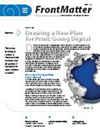Climate Change and Utah Ski Resorts: Impacts, Perceptions, and Adaptation Strategies
IF 1.8
4区 环境科学与生态学
Q4 ENVIRONMENTAL SCIENCES
引用次数: 5
Abstract
Climate change is a threat to ski resorts, the ski industry, and mountain communities that rely on ski tourism. Ski resorts may be able to mitigate some of the social and economic impacts caused by climate change with proactive adaptation strategies. Using historical weather data, future climate projections, and interviews with ski resort managers in Utah (United States), this research investigates the effects of climate change on ski resorts across the state. We examine temperature change at all resorts within the state from 1980–2018 and climate projections from 2021–2100 under different climate change scenarios (RCPs 2.6, 4.5, and 8.5). We also report on semistructured interviews with resort managers to provide insights into how resort leadership perceives the impacts of climate change, is implementing adaptation strategies, and is addressing barriers to adaptation. Many resorts in Utah are warming faster than global averages, and minimum temperatures are rising faster than maximum temperatures. By the end of the century, winter (December–March) minimum daily temperatures in Utah could warm an additional 6.0°C under the RCP 8.5 scenario near northern Utah resorts and 6.6°C near southern Utah resorts. Resort managers are concerned about shorter season lengths, shifting ski seasons, less snow cover, and poorer snow quality. Many resorts are already adapting, with the most common adaptations being snowmaking and diversifying outdoor recreation offerings (particularly during the summer and shoulder seasons). Barriers to adaptation reported by managers include financial costs, adequate water availability for snowmaking, and uncertainty about climate change projections. Climate change is already impacting Utah ski resorts, but adaptation practices can reduce the negative impacts to some degree at most resorts.气候变化与犹他州滑雪场:影响、认知和适应策略
气候变化对滑雪场、滑雪产业和依赖滑雪旅游的山区社区构成威胁。滑雪场可能能够通过积极的适应策略来减轻气候变化造成的一些社会和经济影响。这项研究利用历史天气数据、未来气候预测以及对犹他州(美国)滑雪场经理的采访,调查了气候变化对全州滑雪场的影响。我们研究了1980-2018年该州所有度假村的温度变化,以及不同气候变化情景下2021-2100年的气候预测(RCP 2.6、4.5和8.5)。我们还报告了对度假村经理的半结构化采访,以深入了解度假村领导层如何感知气候变化的影响,并正在解决适应方面的障碍。犹他州的许多度假胜地的变暖速度快于全球平均水平,最低气温的上升速度也快于最高气温。到本世纪末,在RCP 8.5的情况下,犹他州北部度假胜地附近的犹他州冬季(12月至3月)最低日气温可能会增加6.0°C,犹他州南部度假胜地附近可能会增加6.6°C。度假村管理人员担心滑雪季节缩短、滑雪季节变化、积雪减少和雪质量下降。许多度假村已经在适应,最常见的适应是造雪和多样化的户外娱乐活动(尤其是在夏季和肩部季节)。管理人员报告的适应障碍包括财务成本、足够的造雪用水以及气候变化预测的不确定性。气候变化已经影响到犹他州的滑雪场,但在大多数滑雪场,适应措施可以在一定程度上减少负面影响。
本文章由计算机程序翻译,如有差异,请以英文原文为准。
求助全文
约1分钟内获得全文
求助全文
来源期刊
CiteScore
3.10
自引率
18.80%
发文量
36
审稿时长
4.5 months
期刊介绍:
MRD features three peer-reviewed sections: MountainDevelopment, which contains “Transformation Knowledge,” MountainResearch, which contains “Systems Knowledge,” and MountainAgenda, which contains “Target Knowledge.” In addition, the MountainPlatform section offers International Mountain Society members an opportunity to convey information about their mountain initiatives and priorities; and the MountainMedia section presents reviews of recent publications on mountains and mountain development.
Key research and development fields:
-Society and culture-
Policy, politics, and institutions-
Economy-
Bio- and geophysical environment-
Ecosystems and cycles-
Environmental risks-
Resource and land use-
Energy, infrastructure, and services-
Methods and theories-
Regions

 求助内容:
求助内容: 应助结果提醒方式:
应助结果提醒方式:


